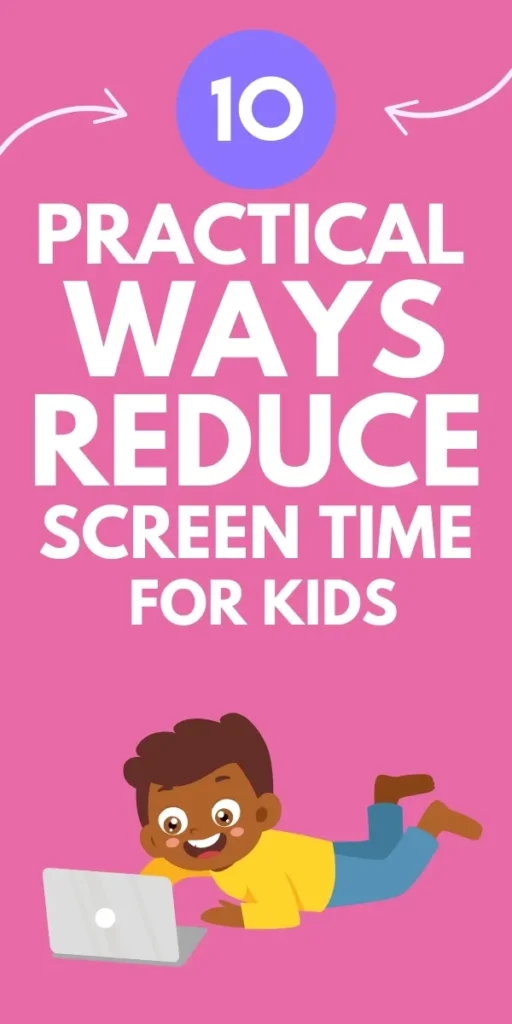So, you know how we’re always trying to find that balance between letting our kids enjoy technology and making sure they’re not glued to screens all day?
In this article you will find practical tips on how to limit screen time of your child, ensuring they strike a balance between digital engagement and other activities.
Why Limit Screen Time for Children

Negative Impact on Health:
Excessive screen time can lead to various health issues such as obesity, poor sleep quality, and eyestrain.
Impact on Cognitive Development:
Prolonged screen time may hinder the development of crucial cognitive skills and limit opportunities for creative play and social interaction.
Behavioral Issues:
Research suggests that excessive screen time correlates with behavioral problems such as aggression, impulsivity, and difficulty concentrating.
Risk of Addiction:
Children exposed to screens from an early age are more susceptible to developing addictive behaviors related to digital devices.
10 Practical Tips to Limit Screen Time for Kids

1. Set Clear Limits
Establish clear guidelines regarding when and how much screen time is allowed each day.
For example, limit screen time to one hour after school and two hours on weekends.
2. Create Screen-Free Zones
Designate specific areas in your home, such as the dining room or bedrooms, where screens are not allowed.
This encourages alternative activities and promotes family bonding.
3. Encourage Outdoor Play
Encourage your child to spend time outdoors engaging in physical activities such as sports, biking, or simply playing in the park.
Outdoor play not only reduces screen time but also promotes overall health and well-being.
4. Model Healthy Behavior
Set a positive example by limiting your own screen time and engaging in alternative activities such as reading, cooking, or pursuing hobbies.
Children learn by observing their parents’ behavior.
5. Provide Alternative Activities
Offer a variety of alternative activities to replace screen time, such as board games, puzzles, arts and crafts, or playing musical instruments.
Find activities that spark your child’s interest and creativity.
Recommended: 300+ Fun & Easy Toddler Activities for Hours of Fun
6. Use Screen Time Wisely
When allowing screen time, choose high-quality, educational content that aligns with your child’s interests and age.
Utilize parental controls to monitor and limit access to inappropriate content.
7. Establish Tech-Free Routines
Create tech-free routines around meal times, bedtime, and family gatherings.
Use these opportunities to connect with your child without distractions from screens.
8. Set Screen Time Boundaries
Encourage your child to take regular breaks during screen time to rest their eyes and stretch their muscles.
Use timers or apps to set boundaries and enforce breaks.
9. Foster Open Communication
Discuss the importance of limiting screen time with your child and involve them in setting rules and boundaries.
Encourage open communication and address any concerns or challenges together.
10. Be Consistent and Flexible
Consistency is key when implementing screen time rules, but also be flexible and willing to adjust as needed based on your child’s needs and circumstances.

Conclusion
When you implement these practical tips and address common concerns, you can effectively limit screen time for your children while promoting their overall health and well-being.
Remember, moderation is key, and by modelling healthy screen habits and providing alternatives, you can help your child limiting screen time and more time for real world activities.